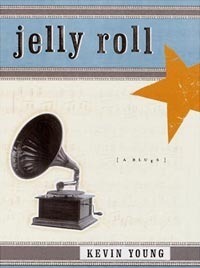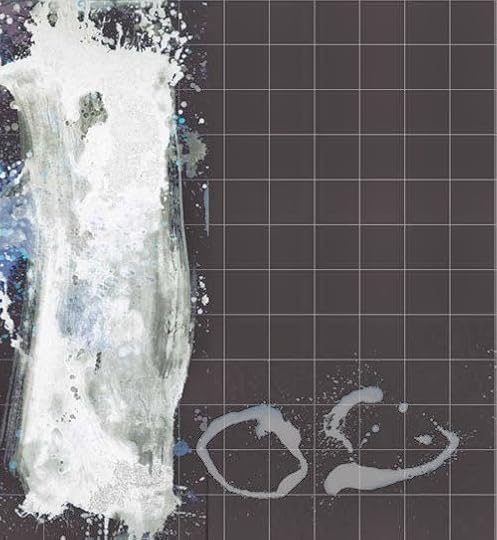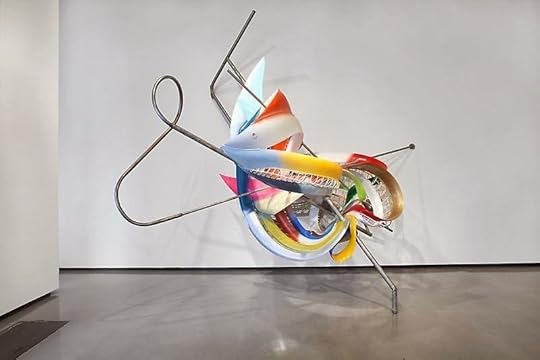Daniel A. Rabuzzi's Blog, page 2
May 4, 2014
"The flight of the constellations returns hope to us."

Miro is one of my touchstones...or perhaps more like a spring bubbling exuberantly from the rock.
The painting above I have never seen before-- Sotheby's auctions it this week, so I am happy we get a look via the Web before it goes most likely to a private collector.
Another happiness is the title Miro gave it: L'espoir nous revient par la fuite des constellations.
[Photo above copyrighted to ArtDaily.org-- shown here solely for non-commercial purposes of commentary; no infringement intended].Daniel A. Rabuzzi is author of the fantasy novel "The Choir Boats," available from ChiZine Publications in September 2009.
"The Choir Boats" explores issues of race, gender, sin, and salvation, and includes a mysterious letter, knuckledogs, carkodrillos, smilax root,
goat stew, and one very fierce golden cat.
(www.danielarabuzzi.com). Daniel blogs at Lobster & Canary about speculative fiction, poetry, history and the arts.
Published on May 04, 2014 07:30
April 20, 2014
On beyond Google

Kevin Young's poetry inspires with a quirky minimalism and a sly swerving of the senses.
Best of all, he pulls language into a fresh order that is undeniable, something sharable with the reader while remaining very much his own.
He re-invents language. Real poetry. Authentic.
Take these lines from "Deep Song" from his collection, Jelly Roll:
"Belief is what
buries us—that
& the belief in belief—
No longer
do I trust liltlessness
—leeward
is the world's
way [...]"
"Liltlessness." Utterly perfect and completely unique. Young coins this word, this concept-- the poet's gift to us.
Sing on, Mr. Young!
For more by and about Young, click here. Daniel A. Rabuzzi is author of the fantasy novel "The Choir Boats," available from ChiZine Publications in September 2009.
"The Choir Boats" explores issues of race, gender, sin, and salvation, and includes a mysterious letter, knuckledogs, carkodrillos, smilax root,
goat stew, and one very fierce golden cat.
(www.danielarabuzzi.com). Daniel blogs at Lobster & Canary about speculative fiction, poetry, history and the arts.
Published on April 20, 2014 07:08
March 30, 2014
Dragon & Clouds
The lobster and the canary are too busy at present to do more than point to beauty and wonder that inspires them, such as Dragon & Clouds, a painting on sliding doors (fusuma) by Soga Shohaku. Made in 1763 CE, the work has just returned from Japan to the MFA in Boston. If the lobster were still in Boston, he would go see this, dream himself out of the water and into the swirling clouds, with the canary perched on the dragon's crest.
 Daniel A. Rabuzzi is author of the fantasy novel "The Choir Boats," available from ChiZine Publications in September 2009.
Daniel A. Rabuzzi is author of the fantasy novel "The Choir Boats," available from ChiZine Publications in September 2009.
"The Choir Boats" explores issues of race, gender, sin, and salvation, and includes a mysterious letter, knuckledogs, carkodrillos, smilax root,
goat stew, and one very fierce golden cat.
(www.danielarabuzzi.com). Daniel blogs at Lobster & Canary about speculative fiction, poetry, history and the arts.
 Daniel A. Rabuzzi is author of the fantasy novel "The Choir Boats," available from ChiZine Publications in September 2009.
Daniel A. Rabuzzi is author of the fantasy novel "The Choir Boats," available from ChiZine Publications in September 2009."The Choir Boats" explores issues of race, gender, sin, and salvation, and includes a mysterious letter, knuckledogs, carkodrillos, smilax root,
goat stew, and one very fierce golden cat.
(www.danielarabuzzi.com). Daniel blogs at Lobster & Canary about speculative fiction, poetry, history and the arts.
Published on March 30, 2014 08:26
March 16, 2014
"Throwing The Ink": Pat Steir's Gestural Genius

[All artwork and images copyrighted to Pat Steir and/or her representatives; no infringement intended; images used here solely for non-commercial purposes, i.e., for commentary]
Pat Steir is an artist whose work deeply informs my own thinking about gesture, disciplined spontaneity, form and field. ( Click here for her bio).

In an excellent interview with Phong Bui in The Brooklyn Rail ( click here ), Steir says that she was told thrown-ink painting began in the third century: "I looked everywhere for it, I didn't understand what it was because I couldn't find it. That was because thrown ink meant broken line, not traditional painting. The artists did not actually throw the ink. I was influenced by the idea of throwing the ink but it was just a misunderstanding. I think a lot of art comes about through misunderstanding."

I just love that, the idea of misunderstanding yielding meaning and beauty. I think the misguided search applies to life much more broadly.

Daniel A. Rabuzzi is author of the fantasy novel "The Choir Boats," available from ChiZine Publications in September 2009.
"The Choir Boats" explores issues of race, gender, sin, and salvation, and includes a mysterious letter, knuckledogs, carkodrillos, smilax root,
goat stew, and one very fierce golden cat.
(www.danielarabuzzi.com). Daniel blogs at Lobster & Canary about speculative fiction, poetry, history and the arts.
Published on March 16, 2014 06:26
March 9, 2014
come celebrate with me: The Work of Lucille Clifton

The lobster & canary last wrote about Lucille Clifton upon the sad occasion of her death: click here .
Yesterday, at Poets House in NYC, we spent time at the special exhibition come celebrate with me: The Work of Lucille Clifton. Curated by Kevin Young, with Amy Hildreth Chen and Lisa Chinn, the collection of Clifton's books, notes, manuscript drafts and other ephemera stems from Emory University's libraries & archives.
Click here for more.
Her voice is in our head forever.
Daniel A. Rabuzzi is author of the fantasy novel "The Choir Boats," available from ChiZine Publications in September 2009.
"The Choir Boats" explores issues of race, gender, sin, and salvation, and includes a mysterious letter, knuckledogs, carkodrillos, smilax root,
goat stew, and one very fierce golden cat.
(www.danielarabuzzi.com). Daniel blogs at Lobster & Canary about speculative fiction, poetry, history and the arts.
Published on March 09, 2014 12:46
March 2, 2014
Fund science (thank you Neil deGrasse Tyson)

The wisest statement I read this week is a singularly compelling and important point that astrophysicist & public intellectual Neil deGrasse Tyson makes in an interview in the current issue of Wired magazine:
"...at least in America, science has been treated sort of cavalierly, not only by the public but also by government. The idea that science is just some luxury that you'll get around to if you can afford it is regressive to any future a country might dream for itself. Innovations in science and technology are the engines of the 21st-century economy; if you care about the wealth and health of your nation tomorrow, then you'd better rethink how you allocate taxes to fund science. The federal budget needs to recognize this."
For more in this vein by deGrasse Tyson, click here.
Daniel A. Rabuzzi is author of the fantasy novel "The Choir Boats," available from ChiZine Publications in September 2009.
"The Choir Boats" explores issues of race, gender, sin, and salvation, and includes a mysterious letter, knuckledogs, carkodrillos, smilax root,
goat stew, and one very fierce golden cat.
(www.danielarabuzzi.com). Daniel blogs at Lobster & Canary about speculative fiction, poetry, history and the arts.
Published on March 02, 2014 05:32
February 23, 2014
Dancing Architecture


Frank Stella, from his Scarlatti Kirkpatrick series (2006--ongoing)All images copyright to the artist and/or his representative(s); images used here solely for purposes of commentary, i.e., non-commercial usage.
I always chuckle at the statement-- variously attributed to Martin Mull, Frank Zappa and several other musicians-- that "writing about music is like dancing about architecture" (click here). I admire its glibness, but I do not agree; too precious, too clever by half, in my opinion. Why shouldn't we cross those hoary boundaries?
Was recently reminded of this, seeing one of Stella's Scarlatti Kirkpatrick pieces at the Museum of Art & Design in NYC. Stella bases his series on both the 17th-century Italian composer Scarlatti and on Yale musicologist & harpsichordist Ralph Kirkpatrick, who authored the definitive catalog of Scarlatti's work in 1953.
As Stella says: "If you follow an edge of a given work visually, and follow it through quickly, you find the sense of rhythm and movement that you get in music."
Click here for more on the Stella series.
And here for a little Scarlatti.
Daniel A. Rabuzzi is author of the fantasy novel "The Choir Boats," available from ChiZine Publications in September 2009.
"The Choir Boats" explores issues of race, gender, sin, and salvation, and includes a mysterious letter, knuckledogs, carkodrillos, smilax root,
goat stew, and one very fierce golden cat.
(www.danielarabuzzi.com). Daniel blogs at Lobster & Canary about speculative fiction, poetry, history and the arts.
Published on February 23, 2014 08:00
February 16, 2014
Hacking The Book

Su Blackwell, Out Of Narnia (2009)(Blackwell holds the copyright; image used here solely for purposes of commentary, i.e., non-commercial).
The more digital our world becomes, the more we remember to cherish its physicality. Not in a fetishistic way, or with antiquarian longing, but in a visceral, "cut to the gut" joy...we sculpt with our slow food, we mash up our music, we slice and dice our tweets and chats....
....and our books, oh my yes, we may read on a countless array of screens, yet still return to the printed page and its binding... as works of art in their own right.
Thinking of an upsurge over the past decade of mixed-media, hand-crafted works involving books, sometimes building on the tradition of "the artist's book," in other cases stemming more from scrapbooking practices, and in others from the principles of collage and iconoclasm saturating the Internet. Su Blackwell transports us into the world within the book. (Click here for more). Last July we blogged about Lisa Occhipinti and her re-envisioning of the book as object. (Click here). Gabe Cyr's Mixed-Media Books: Dozens of Experiments In Altering Books is a lovely collection. (Click here).
Other resources: Printed Matter, Inc. (click here). The Contemporary Artists' Books Conference (click here). 1,000 Artists' Books: Exploring The Book As Art by Peter & Donna Thomas and Sandra Salamony (click here). The Center for Book Arts (click here). Daniel A. Rabuzzi is author of the fantasy novel "The Choir Boats," available from ChiZine Publications in September 2009.
"The Choir Boats" explores issues of race, gender, sin, and salvation, and includes a mysterious letter, knuckledogs, carkodrillos, smilax root,
goat stew, and one very fierce golden cat.
(www.danielarabuzzi.com). Daniel blogs at Lobster & Canary about speculative fiction, poetry, history and the arts.
Published on February 16, 2014 05:31
February 9, 2014
Mapping a billion stars: another space break

Giving ourselves another breather, after the long-form interview with Sandra Kasturi.
The European Space Agency is preparing to launch Gaia, a probe that will map a billion stars over five years.
Per the ESA site:
"It is expected to discover hundreds of thousands of new celestial objects, such as extra-solar planets and brown dwarfs, and observe hundreds of thousands of asteroids within our own Solar System. The mission will also study about 500 000 distant quasars and will provide stringent new tests of Albert Einstein’s General Theory of Relativity."
Click here for more. Daniel A. Rabuzzi is author of the fantasy novel "The Choir Boats," available from ChiZine Publications in September 2009.
"The Choir Boats" explores issues of race, gender, sin, and salvation, and includes a mysterious letter, knuckledogs, carkodrillos, smilax root,
goat stew, and one very fierce golden cat.
(www.danielarabuzzi.com). Daniel blogs at Lobster & Canary about speculative fiction, poetry, history and the arts.
Published on February 09, 2014 06:00
February 2, 2014
Sandra Kasturi Interview, Part Two
Kasturi: Well, with "palelemon sunstreaks" and other things of that ilk, I am probably cribbing a bit from the feel of Earl Birney's wonderful poem, "Anglo-Saxon Street" in which he evokes those old odes in a very modern setting. I always thought that poem was really funny, so it probably infused some of my work.
Question 4. “Palelemon sunstreaks”...echoes of the “thick Teutonic languages, the languages of augurs” (as you put it in “Augury”). Similar echoes throughout your poetry, for instance, in your “October Country”: “the flotsam joy of the petal storm,” “purple-buttered thistle,” “deranged-yellow heat,” “that pan-cracked, brittle, ice-slippered sweet,” “its red-leaf-feathered, burnished golden limbs.” Yet, hold on, strewn among the Germanic thicket are latinate flowers (“joy,” “deranged,” “burnish”) and blooms from the Greek (“petal,” “purple”) and Persian (“lemon”). Talk about word choice and especially whether you think that being a poet from an officially multilingual country has made you more alert to the inner life of the words you choose.
Language has probably always been important to me, though not in a conscious way. I was almost a polyglot growing up: English was my fourth language, after Estonian, Singhalese and German. I'm still fluent in Estonian, but Singhalese is completely gone, and German is like listening to a radio station that's not quite tuned in. I also have a smattering of French from the Canadian school system...but I think those early languages probably altered the way I think at a very young age. Some languages have concepts that simply can't be translated...so that probably gives you interesting pathways in the brain. I sometimes make funny typos when writing really fast--I'll start to spell something the Estonian way, and then when I look back, I go, "Whaaaat???" My favourite one was when I wanted to write "used to" and started typing "juust"--which is how it would be spelled in Estonian. Actually (felicitously!), "juust" means "cheese" in Estonian, so I had this weird bilingual typo/joke going on that probably only other Estonians (or maybe Finns) will find funny.
So yeah, maybe living in a multilingual country has helped? Cultural mosaic? Speaking a bunch of languages at an early ages? Nature/nurture? Who knows. But I love the sounds of words and I love stringing together things and making entirely new words. I was influenced in that by my friend, Carleton Wilson, who's a wonderful poet. He said in one poem something about "the branches of trees gnarcing..." I adored that. "Gnarcing" isn't a word, but of course you know immediately what he means. So perfect!
Question 5. Words and images, and how to separate the dancer from the dance. Which comes first for you: the words, summoned from the hoard in the middle of the night, needing then the image to clothe them in the light? Or the image, born in those palelemon sunstreaks, needing the proper words to adorn them? “Hummingbirds don’t fly south for the winter. They just freeze/ where they are in the air, mistaken for speckles of winter/ sunlight, or, sometimes, low-hanging stars” (from “Hummingbird Hagiography”). “You are black as bees,/ dark as the spine of a prison tower” (“Black as Bees”). “Here is freedom, strange as irregular/ knitting. The other side of the wall is static/ with bald poets, wry madmen and bizarre/ women flapping their arms in the attic” (“The Soft Key”). “...a smile fifteen years in the making” (“Cryogenics”).Kasturi: "Hummingbird Hagiography" is another cheat, I'm afraid, in that it was done for this wonderful poetry exercise called "Twenty Little Poetry Projects" by Jim Simmerman. I highly recommend it, especially for when you are creatively blocked. (http://mypage.siu.edu/puglove/twenty.htm) I wasn't blocked when I wrote that; we just did it in a poetry workshop I was running with David Clink. We also gave a 15-minute time restriction on writing it--a lot of great stuff came out of that exercise from a lot of people.
Generally, though, I think words come to me. I think in titles or in first lines, and they float around, and then the rest comes. I don't really think in images, but if the words help create the image, I guess I've done my job? Though I've done some ekphrastic poetry based on paintings or other images--but they're never as good, I feel. I guess my brain just doesn't work that way. I'm bookish to the core.
Question 6. You’re funny--I laughed out loud several times while reading Come Late, and chuckled often. Daedalus spinning the story of Icarus in “Obese Mythologies,” the Avian High Supreme Action Committee requiring a special license for caged-bird keepers (shades of Monty Python!) in “Bird Logic,” the European Bee-Eater going hungry because the bees have moved to condos in the city (“Regretful Orbits”), in your shoe the bee (“a sort of dirigibly-fat, apian/ ghost ship, damned for whatever sins bees/ commit.../ a bumbleship”) in “Big Bee Cosmology.” Do you set out to be humorous or does the humor suggest itself as the poem emerges?Kasturi: I think I'm just weird. I don't usually set out to be funny. In fact, I've had poems receive huge yuks (like "After Misreading Emerson" which is my earlier collection, The Animal Bridegroom), which I've actually thought were sad poems. But then people laugh when I read them aloud. Go figure! Or maybe I just had my skirt tucked into my underpants or something.
But I do confess that sometimes there are things that I'm so enchanted with, and so charmed by, that I really hope other people will feel the same way. Bumbleship! Who wouldn't like that? It's adorable.
Like many other people, I think I find the universe and existing in it to be this kind of absurdist comedy, so maybe that comes through?
It's nice to hear I'm funny, though. Feel free to tell me that, often.
Question 7. Humorous yes but often tinged with sorrow, with longing for the unattainable, with la musica del amargue: “Just as you and I wish to be birds...wish to listen to the fabled echo, the faint/ but steady pull of birdsong, that brags/ to landbound mammals about the joys of flight,/ the sweeping pull of wings” (“The Movement of Men and Gods”); “Let us end this tyranny/ of waiting, of longing to fly/ south for the winter, to imaginary/ countries where it only rains/ lullabies...” (“Let Us Begin”); “We are not wading,/ but are treading water carefully/ in a narrow sea” (“Godwit”). Does writing poetry ease your yearnings, or enflame them?Kasturi: I've felt lost for much of my life, I think. Or maybe I read too many fairy tales. That's also possible. It's not surprising that Sondheim's "Into the Woods" is one of my favourite musicals of all time. I love stories and reversals in stories and tales that go wrong.
I often feel like I'm homesick for places I've never been or that are long past, or places that don't even exist: Agatha Christie's England, Michael Gruber's voodoo-riddled Miami, Hogwarts, 1920s Paris. Narnia. Middle-Earth. Though I look at that list and realize that all those places were filled with terrible things. Murder, racism, dictators, evil and abuses of all sorts. I always thought the Germans would have some sort of giant compound word for "longing for places that you have never been" but I haven't found it yet. I just finished rereading The Lord of the Rings for the umpteenth time, but for the first time in my life, I wept at the end. What's that about? Sorrow at partings, at journey's (and book's) end? Yearning for magical things? Yearning for the time in my childhood when I first read it? Knowing I can never re-experience that first sense of wonder again? Nostalgia, that criminal muse? God, it's all so terribly sentimental and maudlin, isn't it? I'm ashamed of myself!
I think writing, for me, gets the yearning on the page. Does it ease anguish? No, I don't think so. But maybe it gives it parameters. Here is the very thing that is breaking your heart: you can look at it cleanly. Does doing this mend you? No. But knowing a thing can help.
I don't reread the sad poems like "Godwit" much. Elegies are often too hard and the memory is (cliché alert!) like probing a sore tooth. You become like Laurence Olivier doing terrible things to your mouth, muttering "Is it safe?" Why do that to yourself? Of course I do it. We all do it. That terrible, delicious anguish of loss and memory.
Question 8. Along the same lines, I recently ran across this statement in Mary Ruefle’s “On Beginnings” (in her collected lectures, Madness, Rack and Honey): “Gaston Bachelard says the single most succinct and astonishing thing: We begin in admiration and we end by organizing our disappointment.” Your reaction to this sentiment?Kasturi: Ha! That's wonderful. It's such an enormous statement on so many levels, I'm not sure I can even answer properly. My initial reactions: Hilarious! Awful. Apt. Why can't I say anything that profound? Depressing. Is that my own humdrum little life? Do I admire myself and my work only to find it all terribly disappointing? Embarrassment and shame at the possibility of admiring myself too much. Not done! Off-track. What did Daniel ask me? Oh yeah, that quotation. Hilarious! No, sad. Do I understand it? Or myself? Or my writing? Maybe not.
Maybe that's the best example of how my squirrelly, self-absorbed little brain works. Show me something profound, and all I can think of is how it relates to me. Quel horreur!
Daniel A. Rabuzzi is author of the fantasy novel "The Choir Boats," available from ChiZine Publications in September 2009.
"The Choir Boats" explores issues of race, gender, sin, and salvation, and includes a mysterious letter, knuckledogs, carkodrillos, smilax root,
goat stew, and one very fierce golden cat.
(www.danielarabuzzi.com). Daniel blogs at Lobster & Canary about speculative fiction, poetry, history and the arts.
Published on February 02, 2014 06:26



